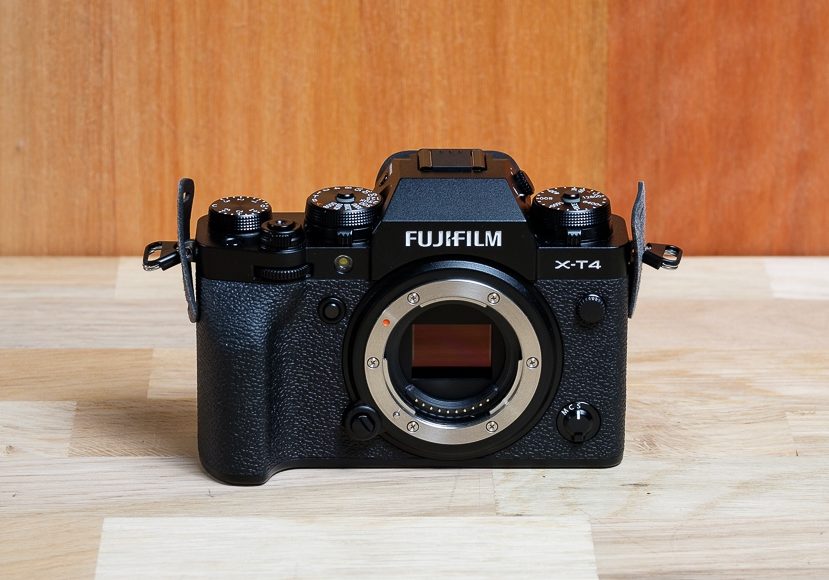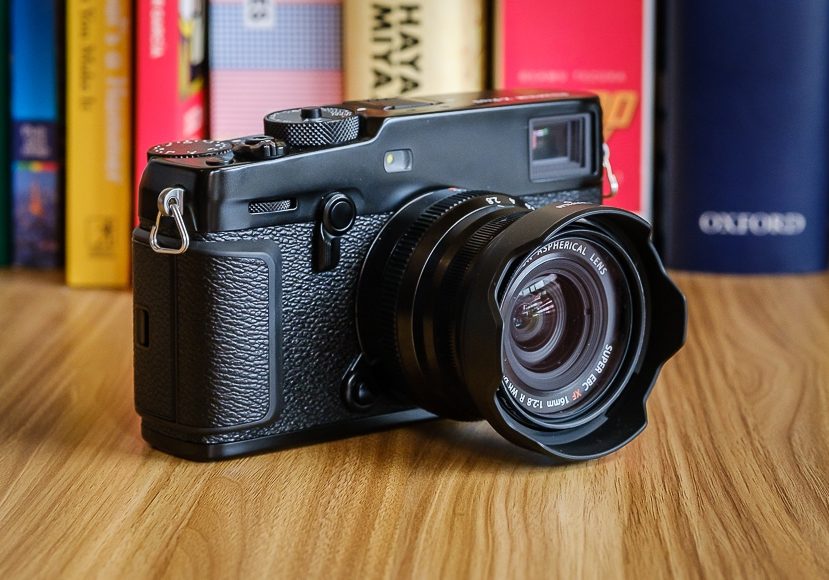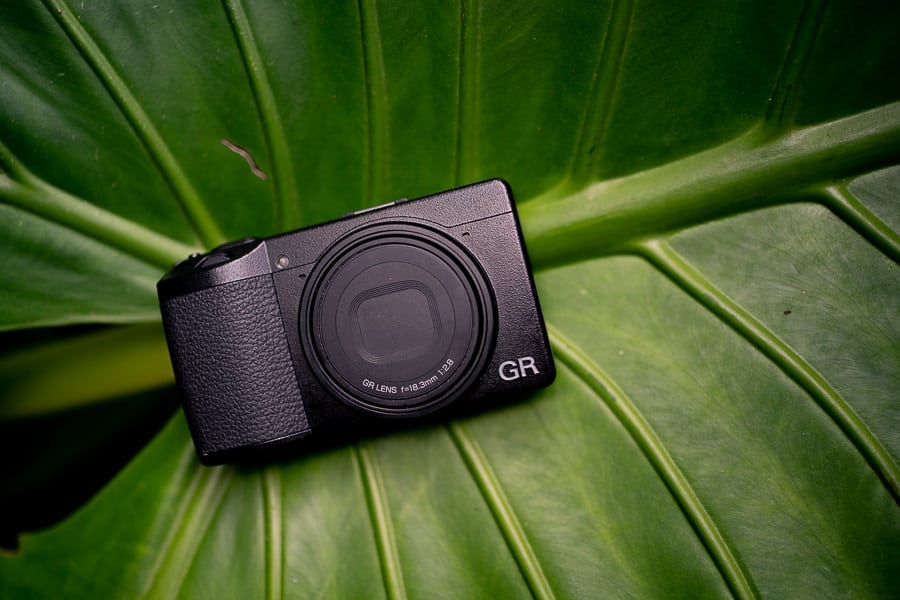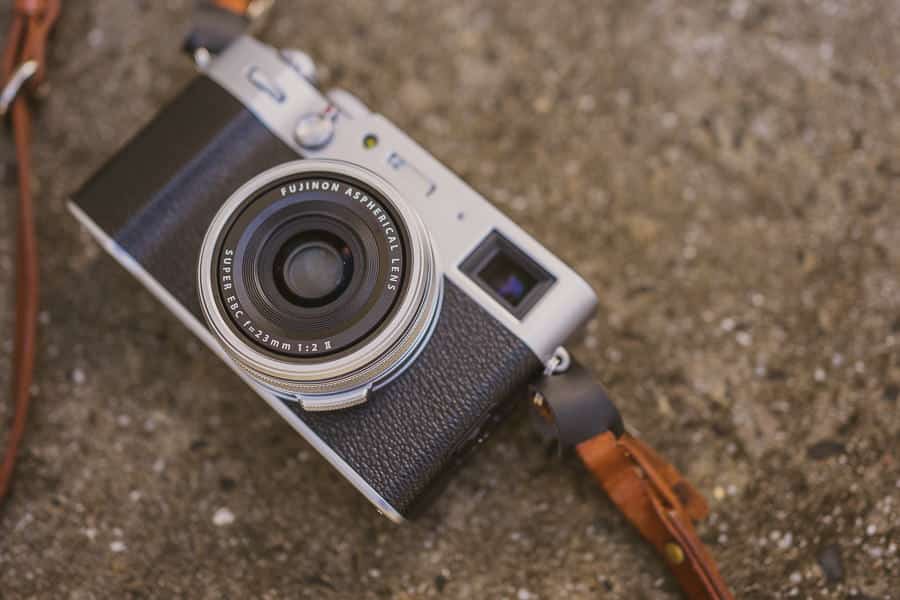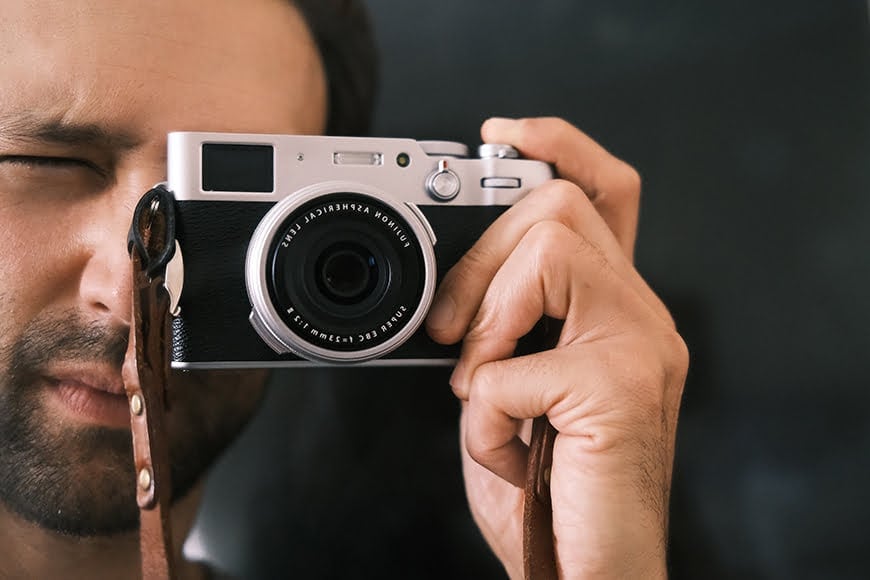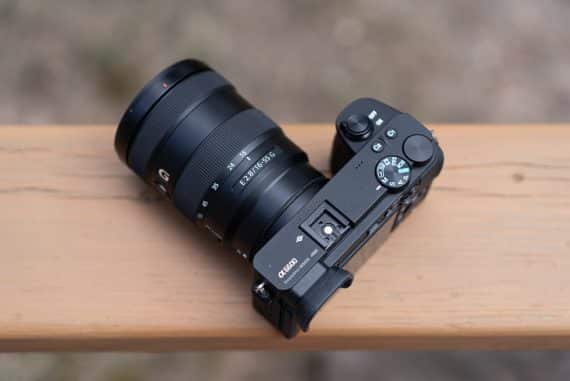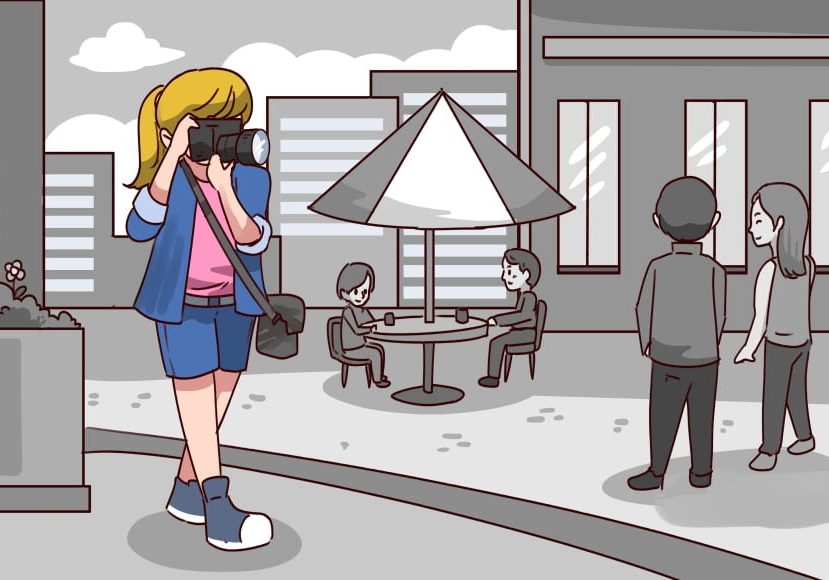
5 Best Cameras for Street Photography in 2024
Want a quick, quiet and stealthy camera that lets you take photos like a ninja? Here are the 5 best street photography cameras of the year.
Camera Gear Guides | Camera Guides | By Greg Cromie and Mark Condon | Last Updated: April 22, 2024
Before we dive into this guide to the best camera for street photographers, it’s important to establish some criteria.
After all, what exactly is a street photography camera? Does a camera for street photography even exist?!
Well, it’s definitely true that you can use any camera to shoot people walking on the street…
However, it’s also true that some digital cameras are better at the job than others, and that’s where this article will help you make the right buying decision.
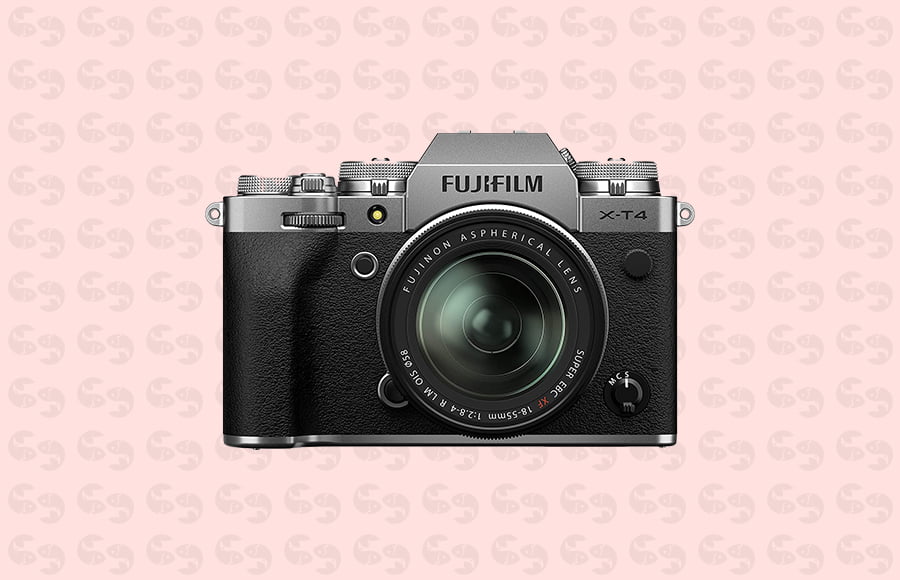
Impressive image quality and image stabilization, combined with incredible autofocus and burst mode - ideal for freezing action on the streets.
Street photographers require a small camera that’s inconspicuous with fast Auto Focus, long battery life, good image quality, and robust build quality that can take a few knocks or drops of rain.
A mirrorless camera is usually more appropriate than a DSLR camera, although some street photographers even use film cameras.
Factors like manual focus, a fixed lens, bright LCD screen, electronic viewfinder, wide dynamic range, interchangeable lenses and other features are nice, but not essential.
Let’s take a look at the best street photography cameras of the year so far.
What is the Best Camera for Street Photography in 2024?
| Image | Product | Features | |
|---|---|---|---|
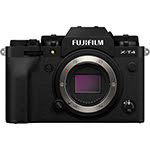 | Fujifilm X-T4OUR #1 CHOICE |
| View Price → |
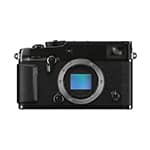 | Fujifilm X-Pro 3TOP RATED |
| View Price → |
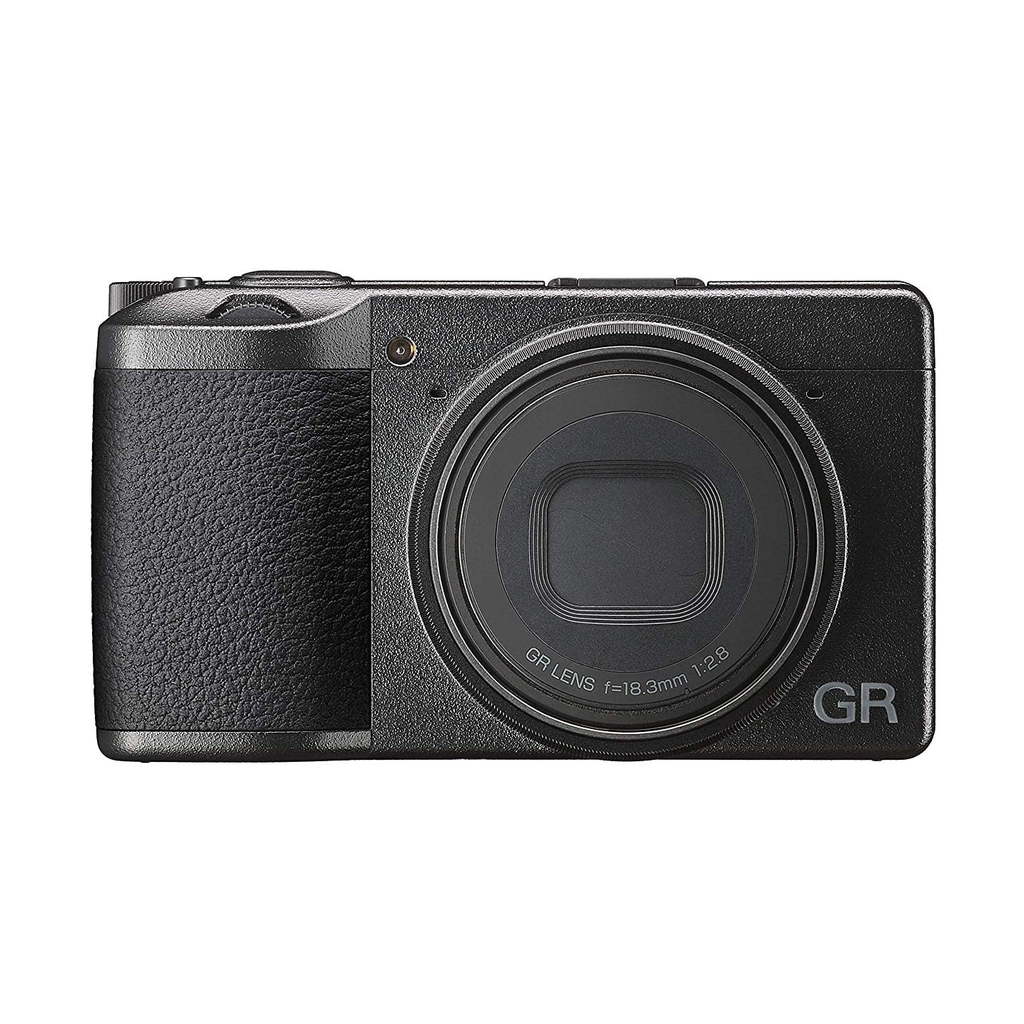 | Ricoh GR IIIGREAT VALUE |
| View Price → |
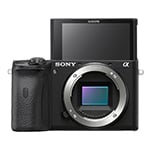 | Sony A6600 |
| View Price → |
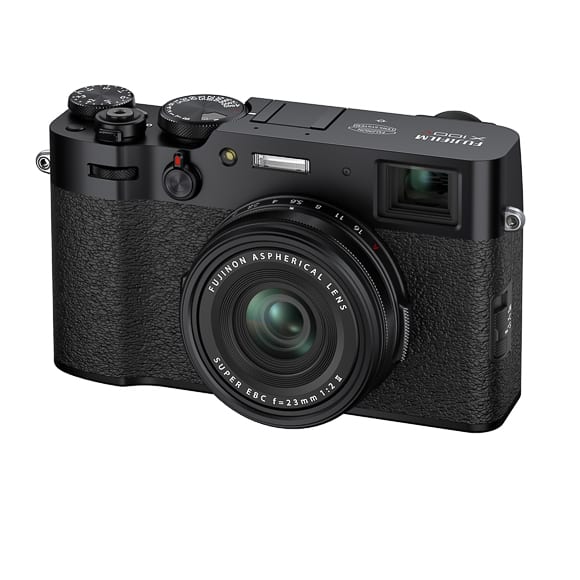 | Fujifilm X100V |
| View Price → |
1. Fujifilm X-T4
- Ultra-fast autofocus system
- Superb image quality
- Appealing retro design
- Excellent EVF
- Robust build
- Manual dials for quick adjustments
- Not the cheapest on the list
- Can become bulky depending on lens choice
- Newer model available
Before we start talking about what I consider to be the best street camera, you don’t need to remind me about the newer model X-T5.
I know the X-T5 is a better camera than the X-T4, but for its price, the X-T4 is excellent value for money right now, and more than capable for the task of photography street action.
As a general rule, mirrorless cameras make far better street photography cameras than DSLRs. The number one reason for this is the reduced size and weight and overall discreetness of a mirrorless camera.
It’s no surprise then that Fujifilm cameras feature heavily in our guide for the best camera for street photography. And it’s certainly no mistake that the brand-new Fujifilm X-T4 is at the top of our list.
I recently reviewed the X-T4 and I was incredibly impressed by its overall performance and image quality – click the black link above to read more.
Street photography is all about documenting people as they interact with their world. Being able to freeze the moment within a split second requires a super-fast autofocus system.
The Fujifilm X-T4 features one of the fastest autofocus systems ever thanks to the combination of its intelligent hybrid AF system and the Fuji X-Processor 4.
You can grab a shot of an interesting street composition and be on your way before anyone even realised you were there.
What’s more, the new and improved shutter on the Fuji X-T4 is near silent even in mechanical shutter mode.
The build quality and looks of this fully weather-sealed camera are second to none. The body is all metal and visually has a typically Fuji retro-inspired design.
The X-T4 is a great size and much smaller than most DSLR cameras – plus at only 607g (1.33lb) you’ll hardly notice you’re carrying it.
Being a mirrorless camera, you can shoot from the articulated touch screen or from the electronic viewfinder. Both are bright and crisp with 1.62 million dots and 3.69 million dots of resolution.
Fuji has an excellent range of XT-4 compatible lenses that you can pair with this camera for a broad range of photography activities.
But for street, our pick is the Fujifilm XF 23mm f/2: it’s optically brilliant and quite possibly the fastest-focusing Fuji lens.
This lens is also weather-sealed meaning that when paired with the Fuji X-T4 you can pursue street photography in poor weather.
In terms of battery performance, this camera features a new and larger battery with the ability to shoot up to 600 shots. Although, with a small lens like the XF 23mm f/2, you’re likely to get even more shots from a single charge.
For low light photography, it has a perfect ISO range up to 12,800 with 1/3 steps and an extended range of 80 to 51,200. Further to this, it features 5-axis IBIS meaning you can slow your shutter speed down in poor light and still capture sharp images.
One of the biggest benefits of this Fuji camera is the image quality. The Fuji X-T4 features the latest 26.1-megapixel X-Trans CMOS 4 image sensor. Images shot in both RAW and JPEG are sharp, vibrant and benefit from Fuji’s highly-regarded colour science.
In fact, the Fujifilm X-T4 has a total of 18 Film Simulations that you can apply to your JPEG images as you shoot or via in-camera processing after the fact. No one produces such high-quality JPEGs straight out of the camera as Fuji can.
The X-T4 retails for around US$1,700 for the body only. With all the features, performance and optical output, that’s brilliant value for money.
If you’re a street photographer looking for the best digital camera for street photography, the Fujifilm X-T4 is a sure winner. It’s a stealthy, sophisticated and feature-packed camera ideal for a day of documenting life on the streets.
2. Fujifilm X-Pro 3
- Robust build
- Excellent autofocus
- Rangefinder styling
- Hybrid viewfinder
- Unique ‘hideable’ rear LCD
- Stealthy styling
- Hidden rear touch screen not to everyone’s liking
- Can become bulky depending on lens choice
The Fuji X-Pro series first launched back in 2012 and is now up to its third generation. The series has been a favourite of street photographers for all that time, so it naturally makes our list of the greatest cameras for street photography.
As with the X-T4, the Fujifilm X-Pro3 is the latest entry in that series of Fuji cameras. And I have to say, it’s a cracker of a camera designed with street photographers in mind – check out my Fuji XPro 3 review.
This rangefinder-style camera has a look that draws its style from rangefinder cameras of old. In fact, out on the street, many will mistake this for a much older film camera.
Looking a little closer will highlight that the weather-sealed Fujifilm X-Pro3 is built like a tank. The body is cast with a magnesium frame with the top and base plate made from titanium for corrosion resistance.
As this is a premium product from Fuji, you can have a choice of three different finishes on the camera body. The first is a standard black while the other two are Duratech Black and Duratech Silver.
The Duratech is a scratch-proof protective coating applied to the exterior but comes at a substantial additional cost.
The hybrid viewfinder can switch from an Optical Viewfinder to an Electronic Viewfinder with the flick of a switch giving you the option to compose with your eye or with the aid of what the lens sees.
Controversially, the Fujifilm XPro3 has a rear touch screen that’s hidden from view – you can, of course, view it by flipping it down.

The Fujifilm X-Pro 3 + XF 16mm f/2.8 makes an ideal street photography camera set up.
Fuji made this design choice to make this camera suited to the street photography market by making the photographic process less distracting.
Regardless, the LCD screen has a great resolution of 1.62 million dots. There’s also a second monitor mounted on the rear panel that hides the LCD – this one is for showing core shooting settings and the box art of the Fuji film simulation.
Again, this is yet another throwback to a retro style of photography with film.
The Fujifilm X-Pro3 houses the same 26.1-megapixel X-Trans CMOS 4 sensor and X-Processor 4 as the Fujifilm X-T4. As a result, the image quality is stunning regardless of if you’re shooting in RAW or pulling JPEGs straight out of the camera.
All Fuji cameras feature the ability to process images in-camera and apply film simulations and fine adjustments to image quality.
Like the X-T4, the Fujifilm Pro-3 is an interchangeable lens camera so you can pair any of the amazing Fujifilm X Series lenses with it.
A great option for street photography is the Fujifilm XF 16mm f/2.8 – it’s fast and a little wider so you can capture more story in your images.
The standard black Fuji X-Pro3 will cost you around US$1800 (check here for the latest price) and if you want one of the Duratech versions, that will add about another US$200.
The Fujifilm X-Pro3 is clearly one of the best cameras for street photography – Fuji even invited some popular street photographers to be a part of its development.
It ticks all the boxes for street photography and, like the X-T4, has a range of features and capabilities that can extend beyond the street if you so desire.
3. Ricoh GR III
- Small, light and stealthy
- Outstanding build quality
- Minimalist aesthetic
- Unique image character
- LCD doesn’t articulate
- Can struggle in low light
Now we come to our first non-Fuji entry, with a camera from a brand that’s a household name amongst street photography enthusiasts: Ricoh.
The range has enjoyed its success as a pint-sized digital street photography camera, and now has something of a cult following.
The series has come a long way since 1996 and in this guide, we celebrate the new generation of a highly capable yet compact digital camera.
The lineage of the Ricoh GR III dates back to the Ricoh GR1 – a 35mm film camera.
The GRIII is the smallest and lightest entry in our search for a great camera for street photography – 257g (0.56lb) including a battery and memory card.
As a result, you can be a street photography ninja by keeping it in your jacket pocket and only producing it when you’re ready to grab a shot.
The stealth qualities of this camera are obvious as a lot of the time you would look like a tourist with a point-and-shoot.
But this is no plastic-fantastic product! The Ricoh GR III has a strong magnesium alloy frame on the inside and proven design considerations on the outside.
Being such a small digital camera, the broad grip provides a greater level of control. Plus, the camera has a minimal design aesthetic with only essential controls evident.
The rear of the camera features as 3.0″ touch-responsive colour LCD with 1037K dots of resolution. Unfortunately, it’s fixed with no articulation.
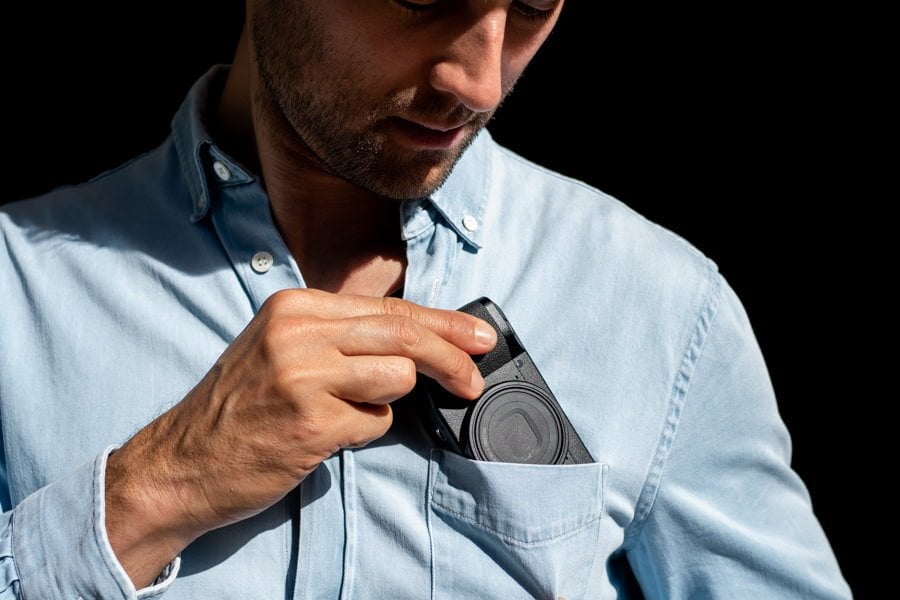
No need for a bag with the Ricoh GRIII.
When it comes to performance, the Ricoh GR III has a great autofocus system however in low light it tends to struggle.
The camera features 3-axis anti-shake image stabilisation which is rare in a camera of this size.
Low light sensitivity is well managed by the sensor and image processor with an ISO range of 100 to a staggering 102,400 (I’m not so sure that anyone actually shoots at such a high ISO, but it’s impressive).
Images from the Ricoh GRIII have a very unique look and feel making it perfect as a street photography camera. Your images simply won’t look like those from every other camera.
This street camera houses a great 24.2-megapixel APS-C sized CMOS image sensor and is driven by the new GR Engine 6 processing chip.
Being such a small camera, the lens is a fixed 18.3 mm (35 mm format equivalent: 28 mm) focal length with its widest aperture being f/2.8.
Many street photographers prefer a wide lens like this to be able to get both dynamic angles and more content in their composition. Plus, being a fixed focal distance, it’s far more challenging and rewarding to work with the lens you have.
One of the biggest challenges with a smaller-size camera like the Ricoh GR III is the battery life – you’re going to get around 200 shots depending on your shooting settings.
As a result, you’re going to need to grab at least one extra Ricoh DB-110 battery for an afternoon of street photography.
The Ricoh GR III is going to cost you around US$900. For a high-quality, reliable and cult-status camera, that’s excellent value for money.
The GR III is the most portable and one of the best street photography cameras available.
If you’re struggling to find one in stock, here’s a guide to the best Ricoh GR III alternative compact cameras.
4. Sony a6600
- Lightning fast autofocus
- Bright EVF
- Industry-leading face/eye-tracking
- Great contrast rendering
- LCD resolution not the best
- Complex menu system
Sony is one of the most popular and recognised consumer electronics developers and is highly regarded for their mirrorless camera technology.
In many respects, they are the industry leaders in both the full-frame and APS-C mirrorless camera market, and a number of their models make ideal street photography cameras.
While the Sony a6600 uses some older tech, it’s still a high-performing and popular choice as a reliable street shooter. That is why it still is in our list of the best street photography cameras in 2024.
Without a lens, this Sony appears as a premium camera with a very deep grip. Once you attach a medium to large lens to the camera, it tends to lose its small appearance and balance (such as the one in the gif above!)
Thankfully, there’s a wide range of Sony E-Mount lenses available for the a6600.
A great lens for street photography that pairs well with the a6600 is the Sony 20mm f/2.8. This is a tiny pancake lens that keeps the overall size and weight of the kit down. You can check out some of our other recommended lenses for the a6600.
The camera is solidly built and comfortable to use with all necessary buttons easily accessible.
Further to this, the camera features a touch LCD with a fairly lacklustre 921,6K dots of resolution. The screen does flip up to 180 degrees making the ability to shoot street from the hip an option.
Fortunately, the EVF or Electronic Viewfinder is a nice bright 2,359K dots of resolution.
Sony boasts probably the best autofocusing system in the industry, and fortunately, the a6600 is a recipient of that tech.
The autofocus is lightning fast thanks to its Fast Hybrid AF that combines both phase detection and contrast detection. As for continuous shooting, you can expect a blistering 11fps, beating most other APS-C mirrorless cameras.
For good measure, the focusing system includes industry-leading face and eye-tracking – great if that’s the way you play on the street.
Images from the Sony a6600 are crisp and bright with greater contrast rendering. This is thanks to the APS-C sized 24.2-megapixel image sensor.
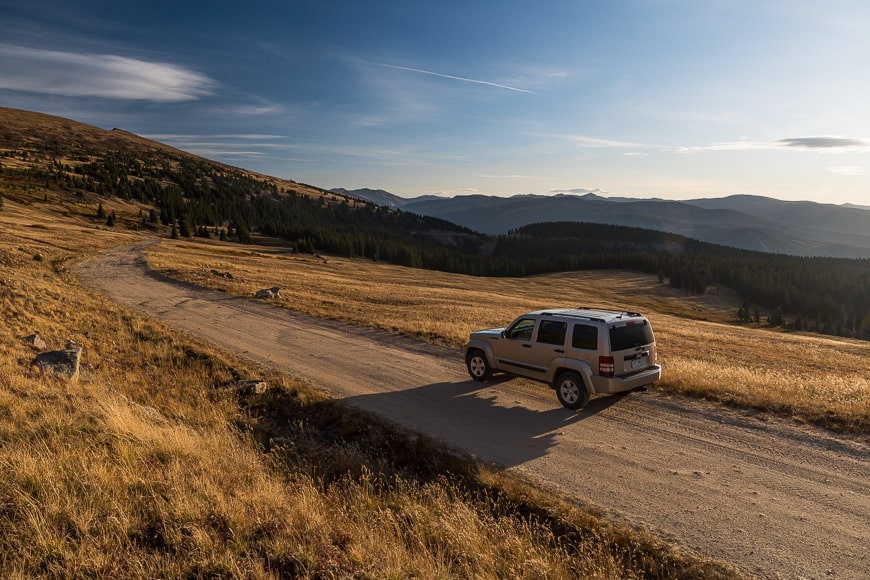
Lightweight, fun, affordable and fast. The Sony a660 produces outstanding photos for professional and amateur photographers | Marc Bergreen
Low light performance is enhanced by the 5-axis image stabilization and the ISO range of 100 up to 102,400 (there’s that crazy high ISO once again).
One of the biggest complaints with any Sony camera is the complex and nonsensical menu systems; the Sony a6600 is not spared in this criticism.
While you can control most of the core functions from the exterior, having to dive into menus to set up or change settings is annoying.
However, once set you’ll be grateful that you don’t have to access the menu often for street shooting.
The Sony a6600 retails for around US$1400. Then all you need to do is apply your lens of choice and you’re set to hit the streets.
For a more in-depth look at the Sony a6600, check out our full Sony a6600 review.
5. Fujifilm X100V
- Robust build
- Built-in ND filter
- Weather-sealed
- Hybrid viewfinder
- Amazingly stylish
- 35mm equivalent lens perfect for street photos
- Poor grip
- Built-in ND filter not available for video
- Hard to find in stock
With our final choice of camera for street photography, we return to the land of Fujifilm and the successor to the popular Fujifilm X100f. This is arguable the best Fujifilm camera for street photography in terms of compactness and style!
Way back in 2011, Fuji developed a brilliant, sophisticated and stylish camera that would be the ultimate street photography system. It’s the camera that got a lot of people started on their Fujifilm journey.
The Fuji X100 series has not strayed too far from the path in terms of aesthetics but the tech has made leaps and bounds. For each release, the various X100 models have been considered the best street photography cameras.
Now we have the Fujifilm X100V with all the latest technology and capabilities Fuji could cram in, and it’s come a LONG way from the first iteration (which had terrible AF performance!)
The X100V is an eye-catching retro-inspired camera with slick lines and a robust build.
It looks more like a mint-condition film camera from decades ago, and some even compare it to a much higher-priced premium camera brand.
Quite simply it looks gorgeous, and what’s more, it performs like a pro!
It’s the first in the series to boast weather sealing – on the provision you buy and fit an adapter ring and filter.
Just like the Fuji X-T4 and X-Pro3, it’s home to the latest 26.1-megapixel X-Trans CMOS 4 sensor and X-Processor 4 from Fuji. This is a premium fixed lens camera with Fuji’s best flagship model tech.
As a result, images from the X100V are gorgeous and pop with Fujifilm’s colour science and of course film simulations.
There’s even a 4-stop ND filter for shooting street on those bright and glary days.
The first four generations of the X100 featured the same 23mm f/2 lens that was optically good but a little soft. Now, the fifth generation has a brand new 23mm f/2 lens that’s sharp and crisp edge-to-edge.
As seen with the Fuji X-Pro3, the X100V has the same hybrid viewfinder with both EVF and OVF options. Even though the EVF has a whopping 3.69-million dots of resolution, it’s nice to have the option to shoot optically.
The rear screen flips up making shooting discretely from the hip easy while looking down at the 1.62 million dots of resolution. You can also set the screen to allow you to select a focus point and shoot from the touch screen.
Speaking of focusing, the X100V employs the same Intelligent Hybrid AF system – combining contrast and phase detection – as its bigger siblings.
Focusing is fast and accurate plus you can utilise the commendable face and eye detection tracking if you desire.
As for battery life, you can capture up to 350 shots when using the EVF or an extended 420 shots when shooting with the OVF – which is decent for a compact model.
While you might not decide to grab a second battery, there are a plethora of great Fujj X100 accessories available to personalise and customise your camera.
In terms of cost, the X100V retails for around US$1400. For a premium camera that’s compact yet features the same performance as a flagship model, that’s great value for money.
Simply put, the Fujifilm X100V is one of the greatest street photography cameras available. Check out our Fujifilm X100V review here.
5 Best Street Photography Cameras: Comparison Table
I’ve made this table so you can quickly compare the most important specs and features of the 5 models that I consider to be the best street photography cameras of the year.
Tap the name of the camera in each instance to see the current price in your currency.
| Camera Model | Sensor Size | Resolution | ISO Range | Autofocus Points | Weight | Dimensions |
|---|---|---|---|---|---|---|
| Fuji XT4 | APS-C (23.5 x 15.6 mm) | 26.1 MP | 160 – 12800 (expandable to 80-51200) | 425 | 1.3 lb / 607g | 5.3 x 3.7 x 2.3 in / 134.6 x 92.8 x 63.8 mm |
| Fuji XPro3 | APS-C (23.5 x 15.6 mm) | 26.1 MP | 160 – 12800 (expandable to 80-51200) | 425 | 1.1 lb / 497g | 5.5 x 3.3 x 1.8 in / 140.5 x 82.8 x 46.1 mm |
| Ricoh GRIII | APS-C (23.7 x 15.7 mm) | 24.2 MP | 100 – 102400 | NA | 0.6 lb / 257g | 4.3 x 2.4 x 1.3 in / 109.4 x 61.9 x 33.2 mm |
| Sony a6600 | APS-C (23.5 x 15.6 mm) | 24.2 MP | 100 – 32000 (expandable to 50-102400) | 425 | 1.1 lb / 503g | 4.7 x 2.7 x 2.3 in / 120 x 66.9 x 59.7 mm |
| Fuji X100V | APS-C (23.5 x 15.6 mm) | 26.1 MP | 160 – 12800 (expandable to 80-51200) | 425 | 1.05 lb / 478g | 5.0 x 2.9 x 2.1 in / 128 x 74.8 x 53.3 mm |
What Should I Look for When Choosing a Camera for Street Photos?
When I choose a new camera for street photography, these are the factors I consider important.
Obviously, your choice will depend on your personal style, preferences, and budget, but at least this list of criteria will give you a starting point:
- Size and Weight: Street photography often involves a lot of walking and moving around, so a compact, lightweight camera is generally more suitable. You’ll be able to carry it around for longer periods without getting tired.
- Discreteness: A camera that is unobtrusive and doesn’t draw attention to itself is generally better for street photography. The less you stand out, the more natural and candid your shots can be.
- Quick Autofocus: Street photography often involves capturing fleeting moments, so a camera with a fast and accurate autofocus system is essential.
- High ISO Performance: You may often find yourself shooting in low light conditions, such as at dusk or dawn. A camera that performs well at high ISO settings will allow you to capture clear images in these situations. While some street photographers use flash, it’s definitely a minority.
- Durability: Since you’ll be using the camera outdoors frequently, it should be sturdy and able to withstand different weather conditions. Some level of weather sealing is a good idea.
- Lens Versatility: Some photographers prefer a fixed focal length lens for its sharpness and simplicity, while others prefer the flexibility of a zoom lens. This comes down to personal preference. Personally, I started out with a zoom lens, but as I gained confidence, I moved to a fixed 35mm prime lens and ‘zoomed with my feet’.
- Image Quality: This is an essential factor for any type of photography. Look for a camera with good dynamic range and color reproduction. You should shoot in RAW to give you maximum leverage in post production.
- Ease of Use: The camera’s controls should be intuitive and easily accessible. The ability to quickly adjust settings like aperture, shutter speed, and ISO is important – most street photographers like manual dials which can be adjusted with muscle memory and feel.
- Price: Street photography doesn’t require the most expensive equipment. It’s more about the photographer’s skill and eye for a good shot. However, consider your budget and what features are most important to you. It’s also worth considering how sad you’d be if you lost your camera while out on the street! For this reason, I never take my Leica Q2 to shoot street photos, reserving it for pics of the family when at home.
- Wi-Fi or Bluetooth Connectivity: This isn’t strictly necessary, but it can be handy for instantly transferring photos to your smartphone for quick editing and sharing while out on the street or resting at a cafe.
Street Photography Camera Choice: FAQs
What’s the best camera setting for street photography?
The best camera setting for street photography is to have a fast shutter speed of around 1/500 and an aperture of around f/8. That way you’ll freeze your subjects in time as well as ensure that everything in the frame is in focus.
What’s the best focal length for street photography?
This will depend on personal preference and how much of the story you want to capture in your composition. However, a great starting point of 23mm (35mm full-frame equivalent) is going to be best as you gain a natural field of view.
How do you carry a camera for street photography?
The main consideration for street photography is how quickly and inconspicuously you can access your camera. That’s why holding your camera securely in hand with a wrist strap is a good option, though some prefer camera straps on the shoulder or around the neck.
Is a DSLR or mirrorless camera better for street photography?
Both can be used effectively, but mirrorless cameras tend to be smaller, lighter, and quieter, making them a popular choice for street photography.
Do I need a high-megapixel camera for taking street photos?
Not necessarily. While high megapixels can be beneficial for large prints and heavy cropping, for most purposes, including online sharing, 12-24 megapixels are typically sufficient.
How important is ISO performance on a camera for street photography?
High ISO performance is important if you’re shooting in low-light conditions or at night. A camera that performs well at high ISOs can help reduce noise and maintain image quality.
Do I need a weather-sealed camera for street shooting?
While not essential, having a weather-sealed camera can be beneficial for street photography as it allows you to shoot in various weather conditions without worrying about your equipment.
What kind of camera autofocus system is best for street pictures?
A camera with a fast and accurate autofocus system is ideal for street photography. Many moments are fleeting, so being able to focus quickly is crucial.
Is Wi-Fi or Bluetooth connectivity important for a street photography camera?
While not essential, Wi-Fi or Bluetooth can be handy for quickly transferring images to your phone or computer for editing and sharing.
Is a high-end camera necessary for street photography?
No, street photography is more about the photographer’s vision and skills than the camera. A mid-range camera or even a smartphone with a good camera can also capture amazing street photos.
Should you use an interchangeable lens camera for street photography?
Some people like to swap lenses while taking photos on the street in order to create some variety in their images. Using longer lenses may help you isolate a subject, while using a wide angle lens encourages you to get closer, and immerse the viewer in your shot. However, you can take great street photos with a fixed lens camera too, and most famous street photographers in the past did exactly this.
Best Street Photography Cameras | Final Words
If you’re a novice or experienced street photographer looking for a new shooter, then any of the cameras listed in our guide will meet your needs.
What’s more, even if you want to get started with street, these cameras offer a user-friendly platform to get going.
Street photography is all about being on the go, travelling light and being as invisible as possible.
As a result, having the right camera will prevent you from drawing attention to yourself. Plus, you can carry a compact street camera, like those covered here, all day without any fatigue or strain.
If you’re in the market for the best shooter for street photography, do yourself a favour and grab one of our highly recommended cameras. As a result, you will find yourself wanting to get out and shoot every single day.

Impressive image quality and image stabilization, combined with incredible autofocus and burst mode - ideal for freezing action on the streets.





